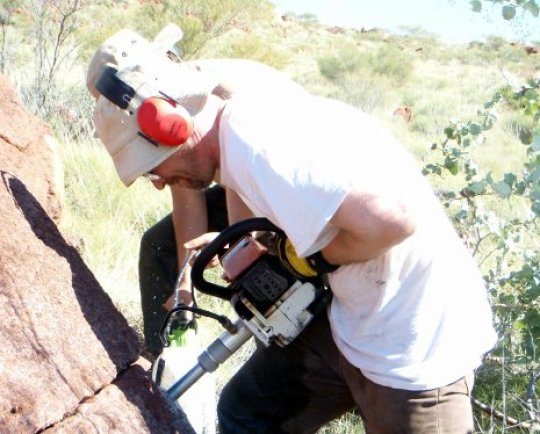Old rocks hold on to their secrets. Now, a geophysicist at Michigan Technological University has unlocked clues trapped in the magnetic signatures of mineral grains in those rocks. These clues will help clear up the murky history of Earth’s early core.
The journal Earth and Planetary Science Letters published a paper on the subject earlier this year. Aleksey Smirnov, an associate professor of geophysics and adjunct associate professor of physics at Michigan Tech, led the study.

Aleksey Smirnov drills into an outcrop in Australia’s Widgiemooltha dike swarm.
Credit: Image courtesy of Michigan Technological University
The work took him Down Under, where he drilled into rock outcrops in Australia’s Widgiemooltha dike swarm that are more than two billion years old. Studying rocks this old–and extracting data from them–is tricky but helps unravel the core’s mysteries.
However, Smirnov’s findings created their own mystery: the magnetic readings were significantly larger than anticipated. This could have implications for early life on earth.
Aleksey V. Smirnov, David A.D. Evans. Geomagnetic paleointensity at ∼2.41 Ga as recorded by the Widgiemooltha Dike Swarm, Western Australia. Earth and Planetary Science Letters, 2015; 416: 35 DOI: 10.1016/j.epsl.2015.02.012



 June 5th, 2015
June 5th, 2015  Riffin
Riffin  Posted in
Posted in  Tags:
Tags: 